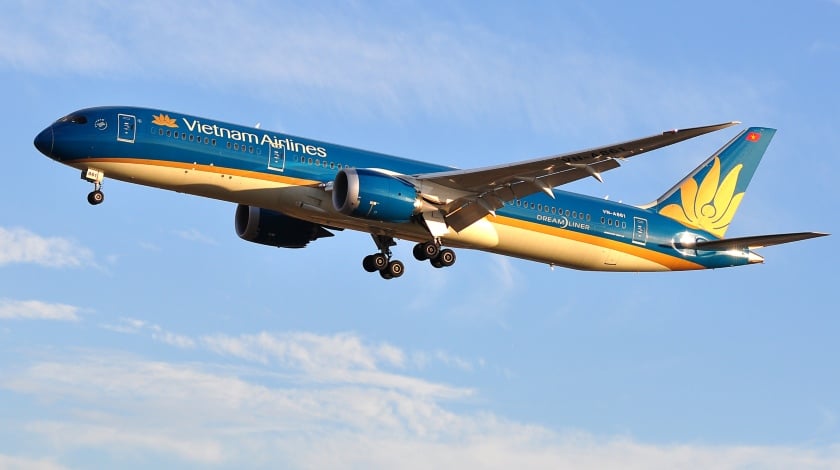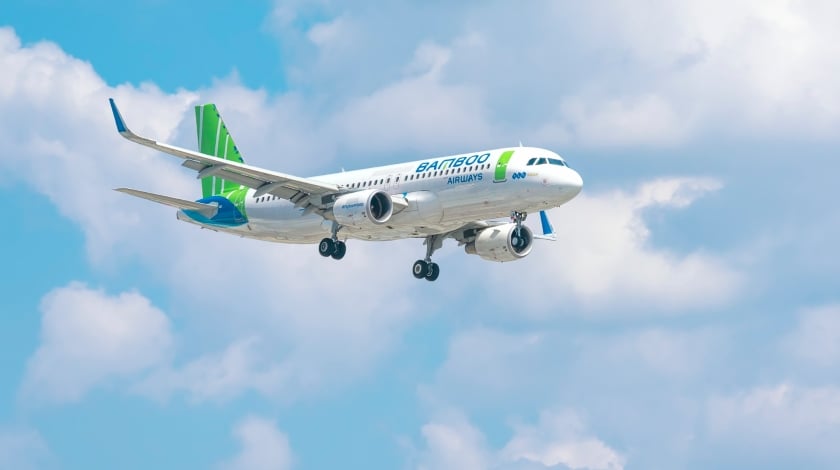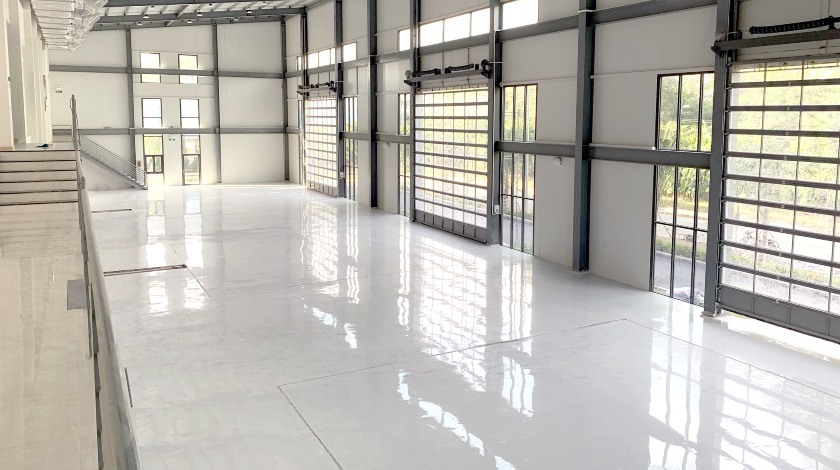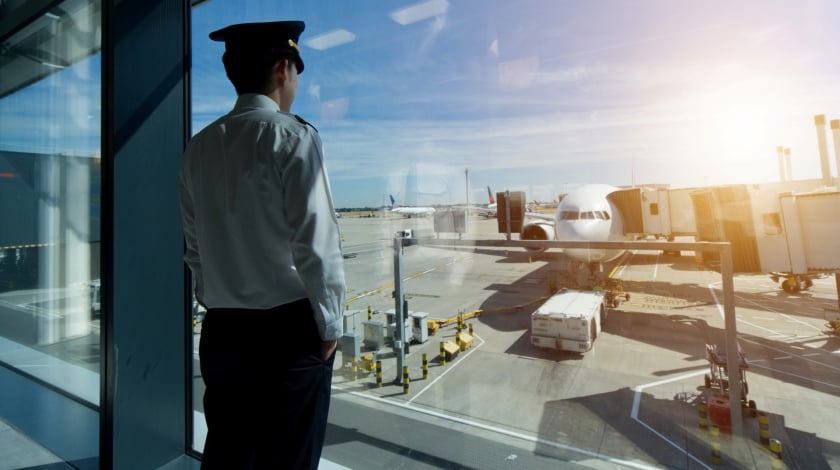Photo: shutterstock
Reading Time: 8 minutesBefore the coronavirus hit, Vietnam, with a population of nearly 96 million people, was one of the most dynamically growing markets on the globe. Over 100 million visitors came to explore Vietnam in 2019 alone.
None denies the fact that this market will be further expanding and booming. The way aviation in Vietnam has gone through the peak of the crisis and how it is managing to get back to normal operations now is rather impressive.
However, keeping in mind that the outdated future forecasts have lost their relevance and new numbers are impossible to determine, we will skip the statistics part. The full impacts of the pandemic are not clear yet.
To discover the situation through the eyes of those running busy in Vietnam, to get familiar with the challenges and opportunities from the local source securing the region with a sufficient number of competent pilots, we have decided to talk to the Managing Director of BAA Training Vietnam, Vytautas Jankauskas.

During the coronavirus peak in the middle of March – the beginning of May, Europe saw most of the aviation paralysed. What was the situation in Vietnam?
In Vietnam the situation was not that desperate; I would dare to say. By locking its borders, Vietnam also halted the international movement and forced Vietnamese airlines to cut their capacity and review schedules. So, from this perspective aviation in Vietnam also faced a hit.
However, there are two sides of the same coin. What prevented Vietnamese aviation from a total stagnation was a very well-developed infrastructure of domestic connection.
Definitely, with quarantine restrictions and travel limitations, local services were also reduced. But not for too long, as until the middle of June almost all Vietnamese carriers succeeded in restoring their pre-coronavirus flight volumes.
The possibility to re-launch almost 100% of domestic flights highly depends on travellers willingness to get back to flying. In other regions, people tend to avoid air travel. In Vietnam the situation appears to be different?
No doubts, flights were restored considering the demand and thanks to the people who confidently returned to intercity flying as soon as the government gave the green light. If airlines in a lot of countries are struggling with filling their planes with passengers, in Vietnam passenger load factors are currently reaching nearly 70%.

For example, before the crisis budget carrier Vietjet operated approximately 500 flights per day (both international and domestic). In the beginning of June, meanwhile, the airline performed about 300 daily flights. And mainly these were local services, although some international all-cargo and repatriation flights were done as well.
The newcomer on the Vietnamese market, Bamboo Airways, had nearly 140 flights a day before the coronavirus hit. In the beginning of summer, the airline restored about 60% of their services. In Vietnam planes are flying full, I could confirm it also from my own experience.
What makes the Vietnamese choose planes over other means of transport? Are the costs of flying in Vietnam different from, for example, in European countries?
Vietnam has a very strong domestic market. People here are used to local flights to save time spent on travelling by car or bus. Regarding the flight ticket prices, I could say that recently, after the coronavirus, we have noticed one interesting tendency. If in Europe or other countries airlines are increasing costs of flying, in Vietnam the situation is different.
To collect as many cash as possible, Vietnamese airlines are fiercely competing on ticket prices. For example, if you look for the economy flight with Vietnam Airlines days before the departure and find the spare seat, it could cost the same amount as the ticket for the flight with Vietjet airlines, which is not a national carrier, compared to Vietnam Airlines, but a low-cost airline.
The strategies of our carriers are rather aggressive. The companies are making all the efforts to have a sufficient number of passengers to minimise cash flow problems and maintain all the slots for future flying.

Talking about pilot training. How did the coronavirus situation impacted the operations of BAA Training Vietnam? What was the demand for training during the peak period? Has the coronavirus crisis brought something new into the training preferences?
In terms of training, I could say that, luckily, we did not feel a huge difference before, during and now after the pandemic. At least yet. Maybe we have less foreigners for type rating studies, but this is rather because of the locked borders, and not a change in preferences.
People from Thailand, Korea or Malaysia are not allowed to enter Vietnam. In these markets we have some airlines and private students interested in our simulators and training programs. But at this moment there is no possibility to enter Vietnam.
However, we are glad to see local candidates actively deciding on type rating courses. In June we welcomed the first post-coronavirus group of six students for Airbus A320 type rating course. The next group of six is planned for July. So, we keep up our work on delivering quality training.
Also, we already see the demand for recurrent training hours growing. The airlines are operating, and pilots are on duty; therefore, they need to maintain their proficiency and keep licences valid.
If earlier our main clients Vietjet and Bamboo Airways booked some hours not only in Vietnam, but at the training centres outside the country, now, with the borders closed, all the training is done inside the country. And we see the demand for recurrent pilot training gradually growing.
Although we did not see any significant changes, I could highlight one interesting tendency, but it is related to Type Rating Instructor’s (TRI) training.
Has the crisis changed pilots’ view on the instructing activity? Are there enough instructors to satisfy the demand?
Most of TRIs are active airline pilots. This means that they perform duties at airlines, and when not flying – provide training to students. Just as an additional activity.
The thing is that before the crisis, the occupation of a TRI was not very popular among pilots. When a pilot earns enough money, one better has some good rest in between flights than works extra hours instructing at a training centre. It is reasonable.
However, during the peak of the coronavirus, the situation changed and even enabled us to supplement the pool of our instructors with additional experienced professionals. To explain the case, I will give you some details on the way BAA Training Vietnam operates.

We run our aviation training business on a separate compound occupying 18 ha of land. On this area, we have not only our training centre but also living apartments for students who undergo training. By being relatively separated from the big city and having our people away from the coronavirus danger, we were allowed to continue our operations even during quarantine.
We did not stop operations, and our TRIs were busy with delivering training to the students without any interruptions. This, in turn, attracted the attention of other pilots who had no flying at that time. As you know, rumours are spreading at the speed of light.
What did we do then? We gathered those instructors, took to our compound, accommodated them in one of the villas and allowed them to successfully provide type rating training to our students.
And now we actively do TRI training to secure future instructors with the necessary qualifications to teach. As the current chain of events shows, it is a very wise plan B for pilots to have instructing as an additional source of income.
In Europe it is noticeable that interest in pilot’s profession is a bit lower due to the lack of job opportunities in the nearest future. What are the prospects in Vietnam for pilots?
In Vietnam we do not feel a significant decrease in the interest of becoming a pilot. The reason, most probably, also hides in the market.
Even the facts that all Vietnamese airlines succeeded in surviving the darkest times of the coronavirus hit and relatively soon restored all domestic services, prove that pilots will be on demand and the profession would not be lost.
I firmly believe that at this point speaking about the market growth would be rather a speculation than calculated estimation. The impacts of the crisis provoked by the coronavirus pandemic are impossible to fully determine; thus, the upcoming couple of months will hopefully allow us to make more accurate forecasts.
Aviation in Vietnam has a lot of potential for development. This is one of the reasons BAA training has stepped into this market and established a training centre in this country.
As for now, Vietnamese airlines, most probably, will work to secure liquidity, manage their fleets and adjust operations to the current demand, with a very close focus on the local air travel.
Also worth highlighting that Vietnam is getting ready to open its borders for international travel. Although the concrete dates and guidelines have not been released yet, sooner or later, the country will be open again. This, in turn, means that the capacity will be further growing with a corresponding demand for First Officers and Captains to handle it.
Will Vietnamese airlines keep growing, as planned before the coronavirus hit?
Some of the Vietnamese carriers are further determined to grow their fleets with additional planes yet this year. Some airlines are in talks with Airbus and Boeing on the deferral of aircraft deliveries until further dates.
Vietjet has just recently confirmed its plans to add 12 additional aircraft (Airbus A320 family) until the end of the year. Meanwhile Bamboo Airways still maintains the plan to operate 40 aircraft by the end of 2020. Also, new domestic routes are being opened in Vietnam during the post-coronavirus period.

Not to omit the fact that later this year or in the beginning of 2021 Vietnam is set to clear for take-off a new airline Vietravel. We are currently in negotiations with this new company on the training contract. As for now, the airline plans to commence operations with five Airbus A320 aircraft.
Before the coronavirus, Vietnam was one of the most rapidly growing aviation markets on the globe. Definitely, after the crisis, the growth numbers would not be that impressive, but still they will be increasing. Not only domestic flying will be thriving but also international travel and cargo operations.
What are the plans of BAA Training Vietnam?
Our main plan – to keep preparing as much competent pilots as we can. Of course, now all the future full flight simulator (FFS) capacity increases would be tailored to the needs of the market.
Now we have two Airbus A320 FFS fully ready for training. At our training centre, we have two additional spots prepared for the placement of additional FFSs. BAA Training is planning to allocate two new FFSs here in Vietnam; however, now we are assessing the market and demand to decide on the type of simulators and the date for them to arrive.

Next year we also plan to acquire and install Door and Slide Trainer. So, the plans are here, the resources to deliver training are also here; all we need now is a more or less stable situation in the world and open borders.
I genuinely believe that if these two conditions are at least partially improved, we would have quite a good year of 2020. In terms of business, of course.

